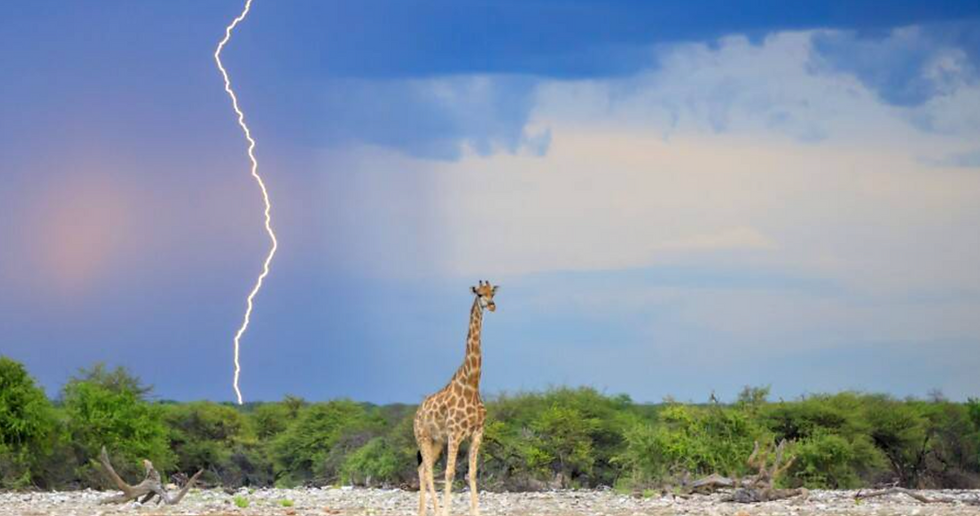Weather gone wild: When lightning struck the tallest animal on Earth
- Ric Kearbey

- Apr 10
- 3 min read
Updated: Apr 10

On a quiet afternoon in a South African conservation park, two giraffes, one of them pregnant, were found lying motionless beneath an open sky. The autopsy revealed what rangers suspected but hoped was not true.
They had been struck by lightning.
There was no fire. No violent crash. Just a sudden discharge from above that ended the lives of two of Earth’s most majestic creatures in a blink.
And it was not the first time it has happened.
Giraffes and lightning: nature’s tallest target
Because of their height, giraffes are uniquely vulnerable in open terrain. During a thunderstorm, their towering frame can make them the tallest object in the area and, unfortunately, a direct path for lightning.
Even if they are not hit directly, ground current, electricity that spreads through the soil from a nearby strike, can still be fatal. One bolt can ripple out and take down anything touching the earth nearby. When you are nine feet tall and standing in the wrong spot, that ripple hits hard.
The South African case drew global attention and emotion. But giraffes are not the only ones at risk. They are just the most visible example of a much wider and wilder problem.
The silent toll on livestock
Across the world, animals are struck by lightning more often than most people realize, especially livestock.
Some estimates suggest that as many as 100,000 cows die each year from lightning-related injuries.
Cows are vulnerable not just because of their size, but because of their behavior. They gather closely together in pastures, they seek shelter under isolated trees, and they often stand near fences or metal water troughs during storms.
In open fields with few tall structures, a group of grazing cattle can easily become the most conductive thing in the area.
The strike that wiped out 300 reindeer
If you are still wondering just how powerful lightning can be, rewind to 2016 in Norway. A single bolt of lightning, just one, killed 323 reindeer on the Hardangervidda plateau during a severe thunderstorm.
They were not all standing on top of each other. They were not all hit at once. But when lightning struck the ground, the electrical energy spread outward, traveling through the earth and into the legs of the animals standing nearby.
That is how a mass fatality can happen in a single flash.
It is not just cows and reindeer
Horses. Sheep. Goats. Dogs. Even elephants.
Any animal outdoors during a thunderstorm is at risk, especially if they are near tall objects, wet areas, or clustered together. The risk is even greater in large, flat areas like the American Midwest, African savannas, and South American plains.
And while these incidents do not always make the news, they leave a very real impact on farmers, ranchers, and wildlife managers.
So what can be done?
While wild animals are left to nature’s rules, people who care for animals can take a few important steps:
Move livestock away from trees, fences, and metal structures during storms.
Avoid overcrowding in open fields.
Provide large, open shelters in grazing areas.
Stay ahead of the forecast, because prevention starts with preparation.
Lightning does not discriminate. But awareness can go a long way.
Why this story matters
Because animals cannot check radar apps. Because a peaceful field can become a danger zone in a single flash. And because, as wild as it sounds, the sky really does reach down sometimes and touch the Earth in ways we cannot predict.
If you love nature, you respect its power. And if you have ever looked at a giraffe, towering, calm, and curious, and thought, “That thing looks like it could touch the clouds”… sometimes, the clouds reach back.
That is not just wild. That is Weather Nerdy.




Comments